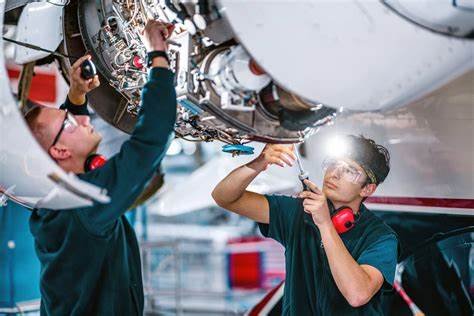The aeronautical sector is evolving rapidly, with Engineering, Procurement, Construction, and Installation (EPCI) playing a pivotal role in its growth. From cutting-edge tools to emerging market trends, aeronautical EPCI is shaping the future of aviation infrastructure, maintenance, and development. Understanding the essential tools, industry trends, and market insights is crucial for professionals looking to stay ahead in this high-stakes industry.
One of the most critical aspects of aeronautical EPCI is the use of advanced design and simulation tools. Computer-aided design (CAD) software, finite element analysis (FEA), and computational fluid dynamics (CFD) are essential for designing aircraft components and infrastructure. These tools ensure precision, enhance safety, and optimize aerodynamics, making them indispensable for engineers and project managers.
Procurement in aeronautical EPCI requires strategic sourcing of high-quality materials, components, and systems that meet stringent aviation standards. From lightweight composite materials to high-performance avionics, every element must adhere to international safety and regulatory guidelines. Companies must establish strong relationships with certified suppliers to ensure compliance and reliability in aeronautical projects.
Construction and installation in aeronautical EPCI involve building airport facilities, hangars, control towers, and maintenance hubs. Advanced construction technologies, such as modular fabrication and 3D printing, are revolutionizing the industry by reducing project timelines and costs. Drones and robotics are increasingly being used for site inspections, enhancing safety and efficiency in aeronautical construction projects.
Several trends are shaping the future of aeronautical EPCI. The rise of green aviation is pushing for more sustainable construction methods, fuel-efficient aircraft designs, and the integration of renewable energy in airport infrastructure. Digital transformation is also a major trend, with artificial intelligence (AI) and the Internet of Things (IoT) optimizing operations, maintenance, and supply chain management. Additionally, the increasing demand for urban air mobility (UAM) is driving investments in eVTOL (electric vertical takeoff and landing) aircraft and supporting infrastructure.
Market insights indicate that the aeronautical EPCI sector is experiencing steady growth, driven by increasing air traffic, defense contracts, and advancements in aviation technology. Countries investing in airport expansions and fleet modernization are creating lucrative opportunities for EPCI professionals. Collaborations between private and public sectors, along with government-backed aviation projects, are further fueling market expansion.
Staying competitive in aeronautical EPCI requires continuous learning, networking, and adapting to new technologies. Professionals should seek certifications, attend industry conferences, and engage in knowledge-sharing platforms to stay informed about the latest developments. Building expertise in sustainable aviation, smart manufacturing, and digital engineering will be key to securing high-value contracts in this evolving field.
Stay ahead in the aeronautical EPCI industry with expert insights, latest trends, and career opportunities. Visit epci.ng to access in-depth resources and connect with industry leaders.
Get the latest updates on Energy, Construction, Engineering, and Cryptocurrency. Join us on WhatsApp or Telegram for real-time news. Have a report or article? Send it to report@epci.ng.
Follow us on X (Twitter), Instagram, LinkedIn, and Facebook for more industry insights.
